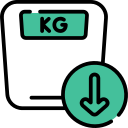Q. What conditions or diseases are associated with steatorrhea?
Doctor Answer is medically reviewed by SecondMedic medical review team.
Steatorrhea is associated with a variety of conditions and diseases that can disrupt the normal digestion and absorption of dietary fats. Some of the most common conditions and diseases that may lead to steatorrhea include:
1. Pancreatic Insufficiency: Conditions like chronic pancreatitis, cystic fibrosis, and pancreatic cancer can lead to a lack of pancreatic enzymes, particularly lipase, which are essential for fat digestion.
2. Celiac Disease: This autoimmune disorder causes damage to the small intestine, resulting in malabsorption of nutrients, including fats.
3. Crohn's Disease: An inflammatory bowel disease that can lead to inflammation and damage in the gastrointestinal tract, affecting fat absorption.
4. Liver Disease: Conditions such as cirrhosis or biliary atresia can disrupt bile production, which is necessary for fat digestion.
5. Gallbladder Problems: Disorders like cholecystitis or cholelithiasis can interfere with the release of bile from the gallbladder, impacting fat digestion.
6. Small Intestinal Bacterial Overgrowth (SIBO): An overgrowth of bacteria in the small intestine can interfere with nutrient absorption, including fats.
7. Zollinger-Ellison Syndrome: This rare condition causes excessive production of stomach acid, which can lead to malabsorption of fats.
8. Whipple's Disease: A rare bacterial infection that primarily affects the small intestine, leading to malabsorption of nutrients, including fats.
9. Short Bowel Syndrome: This condition may result from surgical removal of a portion of the small intestine, reducing its capacity to absorb nutrients.
10. Alcoholic Liver Disease: Chronic alcohol abuse can lead to liver damage and subsequent fat malabsorption.
11. Abetalipoproteinemia: A rare genetic disorder that impairs the body's ability to absorb dietary fats and fat-soluble vitamins.
12. Tropical Sprue: A gastrointestinal disorder that primarily occurs in tropical regions, causing malabsorption of nutrients, including fats.
13. Medications: Some medications, such as orlistat (a weight-loss drug) or certain laxatives, can interfere with fat absorption and lead to steatorrhea.
14. Biliary Obstruction: Conditions that block the flow of bile from the liver to the small intestine, such as gallstones or tumors, can result in fat malabsorption.
15. Other Gastrointestinal Disorders: Various gastrointestinal disorders and infections, such as giardiasis or viral gastroenteritis, can cause temporary fat malabsorption and steatorrhea.
It's important to note that the specific underlying condition should be identified through medical evaluation and testing, as the treatment and management may vary based on the cause of steatorrhea. If you suspect you have steatorrhea or are experiencing related symptoms, it's crucial to seek medical attention for a proper diagnosis and appropriate care.











